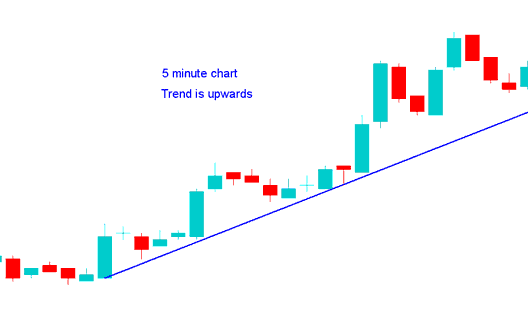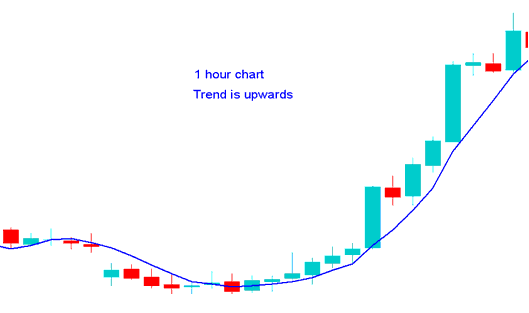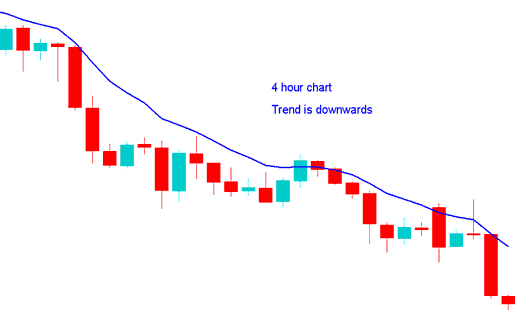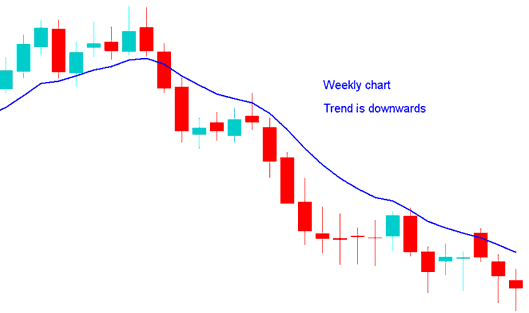Multiple Time Frame Stocks Trading Analysis in Stocks
Multiple time frame stock trading analysis equals using 2 stocks chart timeframes to trade stock trading - a shorter stocks chart timeframe used for trading and a longer stocks chart timeframe used to check the stocks trend.
Since it is always good to follow the stocks trend when stocks, in Multiple Time Frame Stocks Trading Analysis, the longer stocks chart timeframe gives us the direction of the long term stocks trend.
If the long term stocks trend direction supports the direction of the smaller stocks chart timeframe then the probability of opening a profitable stocks trade is greatly increased. This is because even if you make a mistake the long term stocks trend will eventually save you. Also if you trade with the direction of the stocks trend, then mostly you will be on the winning side - this is what this Multiple Time Frame Stocks Trading Analysis is all about.
Remember there is a popular saying by many stocks traders that says; "The stocks trend is your friend" - never go against the stocks trend when trading.
There are four different types of stocks traders - all these different types of stocks traders use different stocks chart timeframes to trade as shown below.
Examples of how each type of Stocks trader uses multiple Stock chart Timeframes analysis strategy:
Stock Trading Scalpers
Scalpers hold on to their stock trades for only a few minutes. The scalper stocks trader never holds on to a stocks trade for more than ten minutes. With the objective of making small amounts of pips as profit, 5 pips - 15 pips.
A Scalper using 1 minute stocks chart wants to go long, checks 5 minute stock trading chart, which looks like the one below, since 5 min show stocks trend is going up, then decides from this technical analysis it's okay to buy.

Best Timeframe for Scalping Stocks Trading
Stocks Trading Day Traders
Day stocks traders hold on to their open stock trades for a few hours but not more than a day. With the objective of making quite a number of pips in profit, 30 - 60 pips.
Stocks Trading day trader trading 15 minute stocks chart wants to go long, checks 1 hour stock trading chart, which looks like the one below, since 1 hour shows stocks trend is going up, then decides from this technical analysis it's okay to buy

Best Timeframe for Day Stocks Trading - Best Timeframe for Intraday Stocks Trading
Swing Traders
Swing stocks traders hold on to their open stock trades for a few days to a week. With the objective of making a large number of pips in profit, 100 - 250 pips.
Swing trader using 1 hour stocks chart wants to go short, checks 4 hour stock trading chart, which looks like the stocks example illustrated and explained below, since 4 hour shows the stocks trend is going down, then decides from this technical analysis it's okay to sell.

Best Timeframe for Swing Stocks Trading - Best Timeframe for Swing Stocks Trading
Position Stock Traders
Position stocks traders are traders that hold on to their stock trades for weeks or months. With the objective of making a large number of pips in profit, 300 - 800 pips.
Position stocks trader using the daily stocks chart wants to go short, checks weekly stock trading chart, weekly looks like the one below, since weekly shows the stocks trend is going down, then decides from this technical analysis it's okay to sell.

Best Timeframe for Positional Stocks Trading
How to Define A Stocks Trend
Using a stocks system that has 3 stock trading indicators - Moving Averages Crossover System, RSI Stock Indicator and MACD Stock Indicator - and uses simple rules to define the stocks trend. The rules are:
Upward Stocks Trend
Both Moving Averages Moving Up
RSI Stocks Indicator Above 50
MACD Stocks Indicator Above Centerline
Downward Stock Trend
Both Moving Averages Moving Down
RSI Stocks Indicator Below 50
MACD Stocks Indicator Below Centerline
